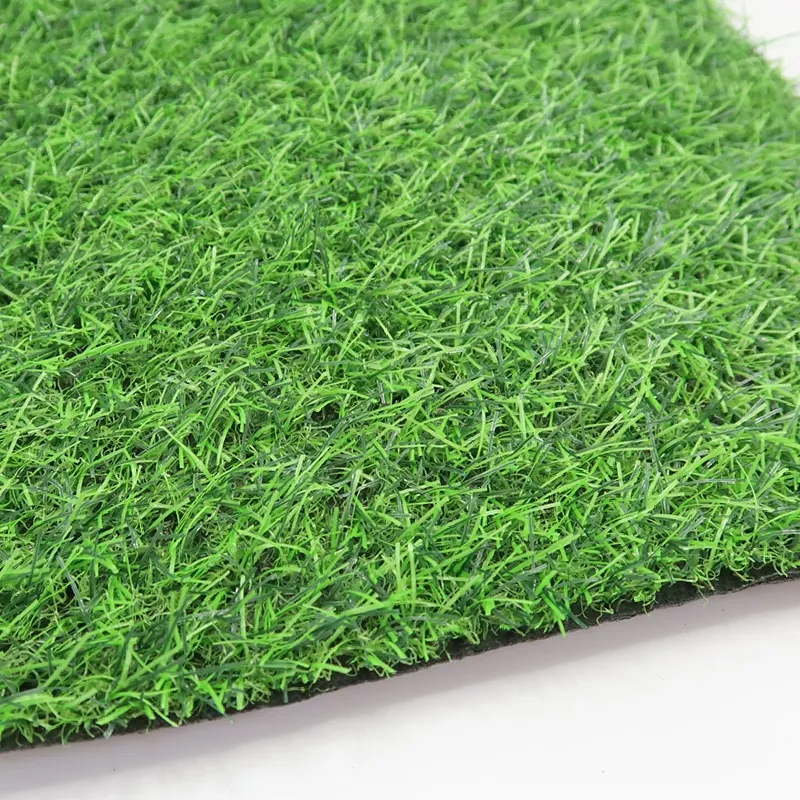
- Afrikaans
- Arabic
- Belarusian
- Bengali
- Czech
- Danish
- Dutch
- English
- Esperanto
- Estonian
- Finnish
- French
- German
- Greek
- Hindi
- Hungarian
- Icelandic
- Indonesian
- irish
- Italian
- Japanese
- kazakh
- Rwandese
- Korean
- Kyrgyz
- Lao
- Latin
- Latvian
- Malay
- Mongolian
- Myanmar
- Norwegian
- Persian
- Polish
- Portuguese
- Romanian
- Russian
- Serbian
- Spanish
- Swedish
- Tagalog
- Tajik
- Thai
- Turkish
- Turkmen
- Ukrainian
- Urdu
- Uighur
- Uzbek
- Vietnamese
artificial grass in hot weather
Jan . 02, 2025 04:44 Back to list
Artificial Grass in Hot Weather Advantages and Considerations
As urban environments expand and the demand for functional outdoor spaces increases, synthetic solutions such as artificial grass have gained remarkable popularity. Homeowners, businesses, and sports facilities alike are turning to this innovative alternative to natural grass for its low maintenance and aesthetic appeal. However, one critical factor that often comes into question is the performance of artificial grass in hot weather. This article explores the advantages of artificial grass in hot climates, while also addressing some considerations to ensure optimal performance.
Benefits of Artificial Grass in Hot Weather
1. Heat Resistance and Durability One of the most prominent benefits of artificial grass is its ability to withstand extreme temperatures. Unlike natural grass, which can wilt and turn brown under intense heat, synthetic options are designed to be resilient. High-quality artificial grass is manufactured from UV-resistant materials that help retain color and texture even when exposed to direct sunlight for extended periods. As a result, homeowners and property managers can enjoy a lush, green lawn year-round despite the blazing sun.
2. Water Conservation Another significant advantage of artificial grass is its water-saving potential. In many regions, especially those prone to drought, maintaining a natural lawn requires substantial water usage. Artificial turf eliminates the need for watering, which not only conserves water but also decreases water bills. In hot weather, the benefits are even more pronounced as homeowners can reduce the burden of keeping their grass hydrated while environmental efforts aimed at sustainability flourish.
3. Low Maintenance Hot weather often means additional care for natural grass, including regular mowing, aeration, and fertilization. In contrast, artificial grass demands minimal upkeep. Users can simply clean debris, occasionally brush the fibers, and ensure the materials remain free of dust and dirt. This ease of maintenance can be a boon in the scorching heat, allowing individuals to spend more time enjoying their green space rather than laboring in it.
4. Cooler Surface Temperatures While it’s true that artificial grass can get warm in direct sunlight, innovations in turf technology have resulted in products designed to minimize heat retention. Some manufacturers now offer cooling infills that can help regulate surface temperature, making it more comfortable to walk on during hot days. Additionally, incorporating shade through landscaping or structures can further mitigate heat, creating a more pleasant environment even under the scorching sun.
5. Increased Usage With the durability and low maintenance nature of artificial grass, outdoor spaces can be utilized more frequently in hot weather. Families can host summer barbecues, children can play freely, and pets can roam without the worry of damaging the lawn. In commercial settings, businesses can enhance their outdoor appeal, attracting more customers and encouraging activities such as outdoor dining.
artificial grass in hot weather

Considerations for Artificial Grass Users in Hot Weather
While there are numerous advantages to using artificial grass in hot climates, potential users should consider some factors to maximize its effectiveness
- Surface Temperature Awareness Although advancements have been made, artificial grass can still reach higher temperatures than natural grass. Users should remain mindful of this when scheduling activities, especially for children's play areas or pet use. Providing shaded spots or using cooling infill can help mitigate this concern. - Proper Installation Ensuring that artificial grass is installed correctly is crucial for longevity and performance. Drainage systems should be in place to avoid water pooling, and the right type of infill can help with temperature regulation, durability, and comfort.
- Regular Maintenance While maintenance is minimal compared to natural grass, regular inspections are still necessary. Checking for loose seams, ensuring proper drainage, and brushing the fibers can help maintain the aesthetic and functional quality of the turf.
- Environmental Considerations Although artificial grass is beneficial for water conservation, potential users should be aware of the environmental impact associated with its production and disposal. Opting for eco-friendly options and considering lifecycle implications may inform more sustainable decisions.
Conclusion
Artificial grass presents an attractive solution for outdoor spaces in hot weather, offering durability, low maintenance, and water conservation. While it poses certain challenges, understanding and addressing these considerations can lead to a rewarding and enjoyable outdoor experience. With proper planning and installation, artificial grass can provide a green oasis amidst the heat, transforming how we enjoy our outdoor environments.
-
The Benefits of Artificial Turf for Indoors
NewsJul.15,2025
-
How Artificial Grass Suppliers Ensure Quality Products
NewsJul.15,2025
-
Artificial Grass and Pets: A Space for Relaxation
NewsJul.08,2025
-
Balcony & Outdoor Decoration with Artificial Grass
NewsJul.08,2025
-
Best Indoor Artificial Grass for Home
NewsJul.07,2025
-
Best Pet Turf for Dogs: Safe & Durable Artificial Grass Options
NewsJul.07,2025
Products categories









